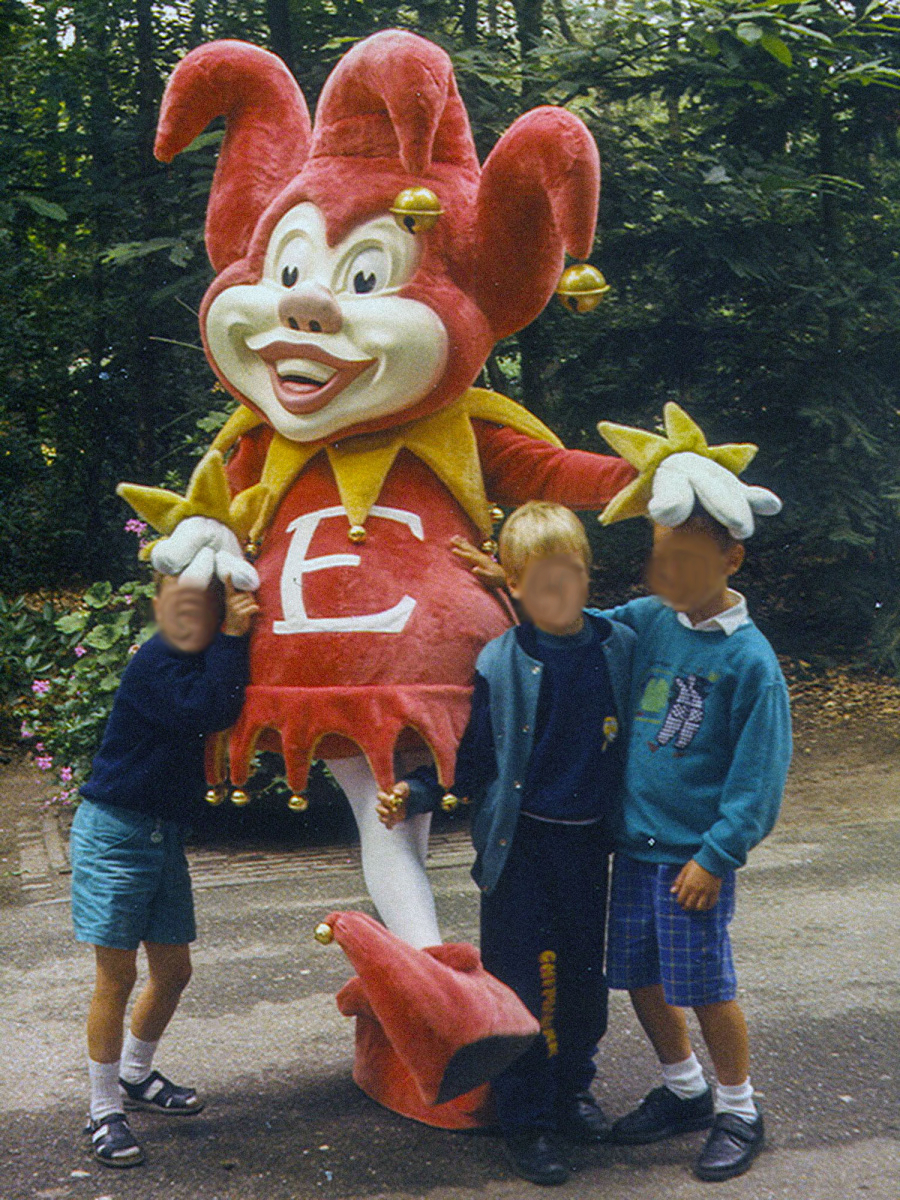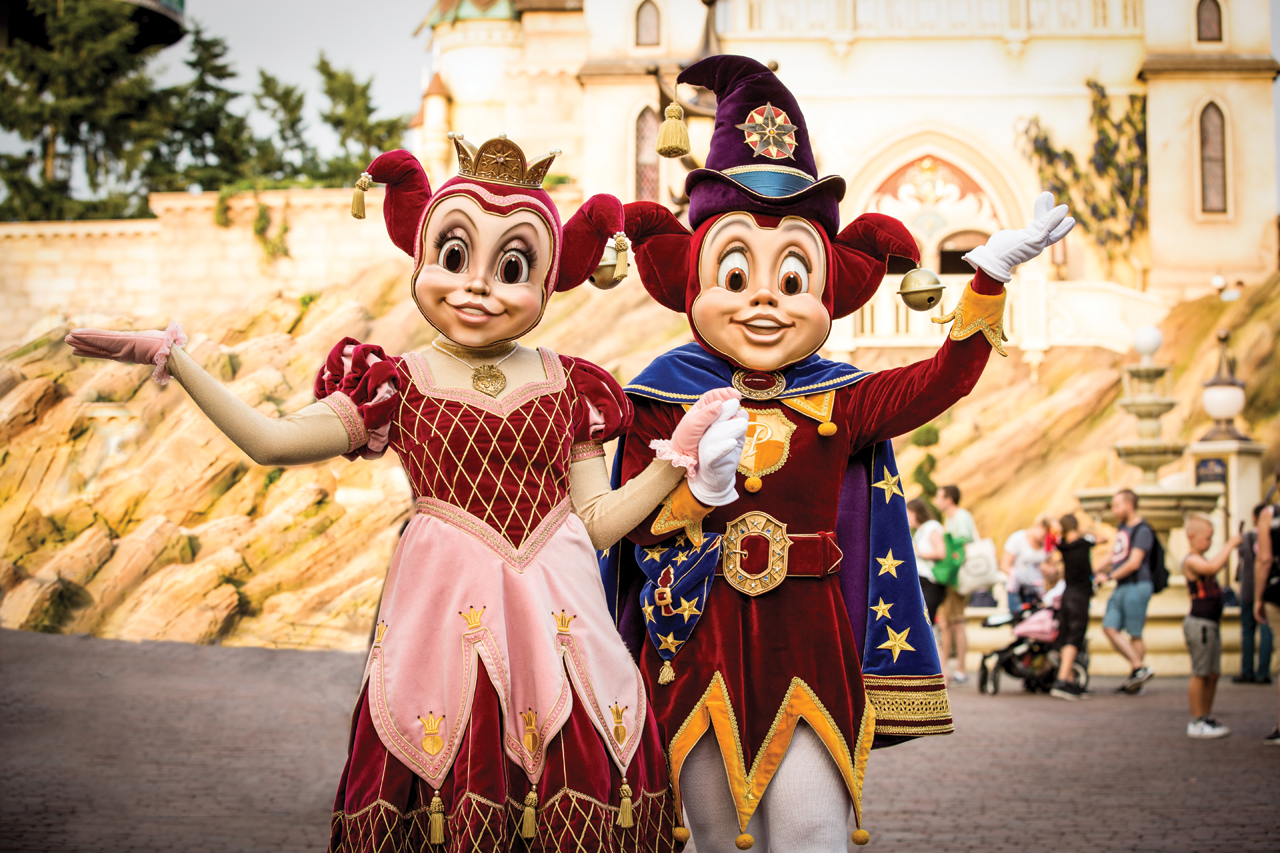
Walter Benjamin's definition of aura in his seminal essay The Work of Art in the Age of Mechanical Reproduction presents valuable insight to the intersection point of authenticity and commercialization for modern branding (Benjamin, 2008; Benjamin et al., 2002). Benjamin hypothesizes that cultural objects decay and lose their unique "aura" as soon as mass-produced (Alexander & Doherty, 2022; MacIntyre et al., 2004). The same might hold for Pardoes, the popular Efteling theme park icon in the Netherlands. Pardoes' transition from mascot for a fun park to global branding icon is treading a fine line between sustaining authenticity and drawing on marketing potential.
Pardoes, launched in 1989, was originally a lighthearted, jester-like mascot to personify Efteling, a park that boasts about its fairy-tale setting ("An Englishmen's Guide to the Efteling," n.d.; "Maak kennis met Pardoes - Efteling Kids", n.d.). His authenticity was in his own, direct relationship with the visitors, providing an experience tied to the park's own identity. The playful character of Pardoes is consistent with Benjamin's concept of aura, since his live, in-the-moment interactions provided guests with a feeling of uniqueness (Benjamin et al., 2002). This is one of the methods by which characters such as Pardoes can bring about an "authentic experience" for guests of the park.

1988 Pardoes in Efteling (Eftepedia)
Although the brand was created by Efteling, Pardoes' face began appearing everywhere on merchandise, advertising, and airtime ("Maak kennis met Pardoes - Efteling Kids", n.d.). Even though he was more marketable and public now, this diluted his reality (Benjamin, 2008). Large-scale production of toys, models, and advertising materials is a prime example of Benjamin's criticism of mechanical reproduction, where the originality of cultural objects diminishes as it is copied (Benjamin et al., 2002; Alexander & Doherty, 2022). Pardoes' evolution is a reflection of Benjamin's theory, as taking away his image from the first park experience takes away from his aura, reducing him to a commodity instead of an original cultural icon (Fritz et al., 2017).
Pardoes has also accessed the jester archetype, a character from the past who is a trickster and brings truth. In the medieval period, jesters' humor was used to invert power and appropriate social facts (Konarska-Zimnicka, 2012; López & Cadahía, 2007). Pardoes himself illustrates both on-surface pleasure and off-the-surface sense in connection with imagination, questioning, and discovery. His jocund but wise character is in harmony with the composite cultural personality of jesters, who preserved vagueness among entertainment and ethical and moral dimensions (Cristil, 2020; MacIntyre et al., 2004).

2019 Pardoes and Pardijn in Efteling (Efteling)
Pardoes experienced a revolutionary image overhaul in 2017 with the launch of the Symbolica dark ride at Efteling ("Maak kennis met Pardoes - Efteling Kids", n.d.; "An Englishmen's Guide to the Efteling," n.d.). The overhaul returned him to the park's roots of fantasy, storytelling, and wonder and ensured that his image continued to be rooted in the true essence of Efteling. Benjamin's theory, although as critical of mass production, confirms that authenticity can be recreated and sustained where the original character of an object is recovered (Benjamin et al., 2002). Pardoes' transformation as a guardian of imagination reaffirms the possibility of authenticity alongside greater commercialization (Fritz et al., 2017; Beverland, 2006).
Pardoes' evolution illustrates the tension between commercialization and authenticity that brands often face (Beverland, 2006; Coleman, 2015). While Benjamin's theory suggests that mass production will ruin authenticity, Pardoes' ongoing evolution illustrates that authenticity can evolve and change, so the character still represents the magical and moral essence of Efteling (Fritz et al., 2017). His story demonstrates that in an era of mass media and commercialization, authenticity can be preserved and celebrated.